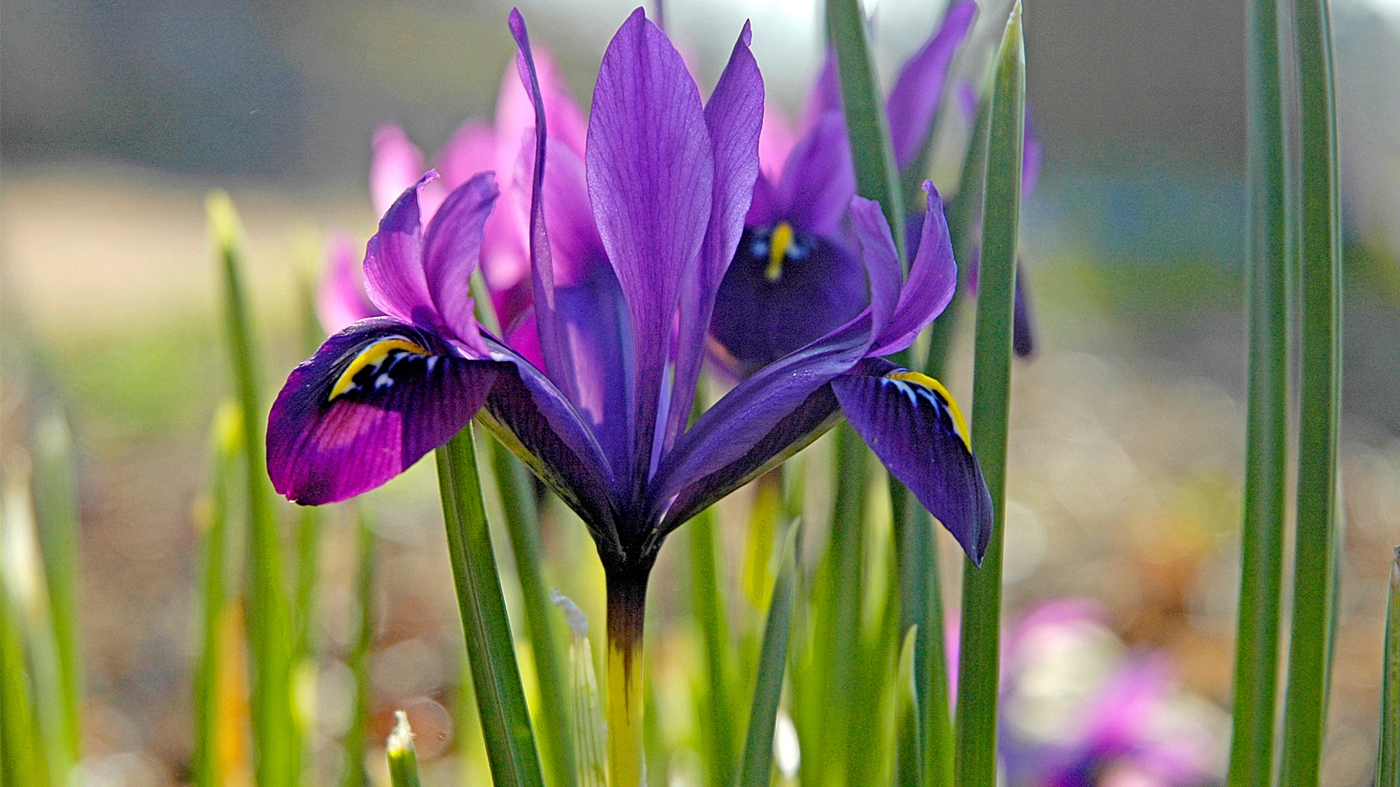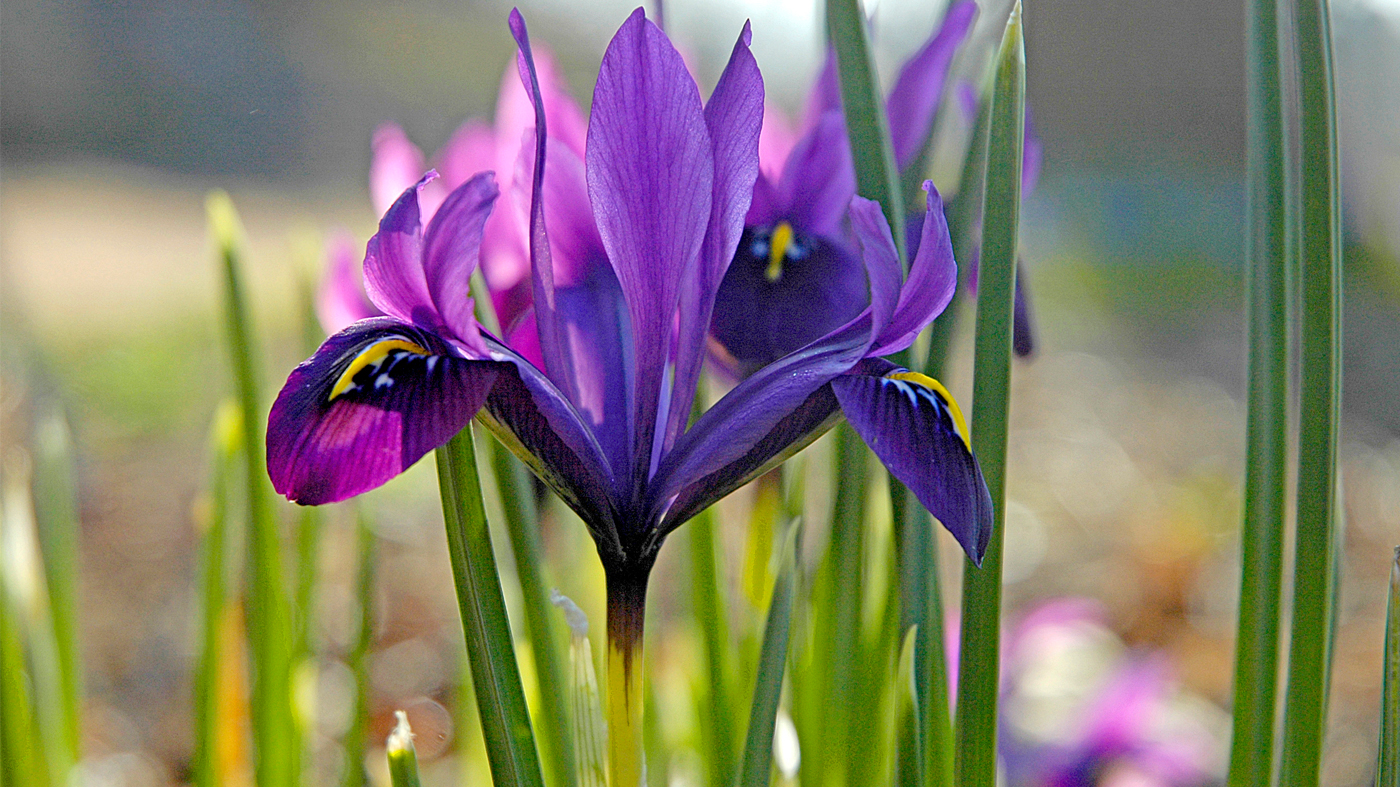

News
Garden Stories
My Beloved Saree
A Cherished Tradition
My first introduction to a saree was when my grandmother gifted me a children's version when I was a little girl. I remember unfolding the beautiful fabric, taking in the scent of a newly minted textile. I was mesmerized by the gorgeous design of flowers, leaves, and tendrils woven together with delicate red, gold, and green threads. I remember gliding my hand across the shimmering fabric to feel the contours of the design. As I got older, I gradually learned more about this lustrous material.
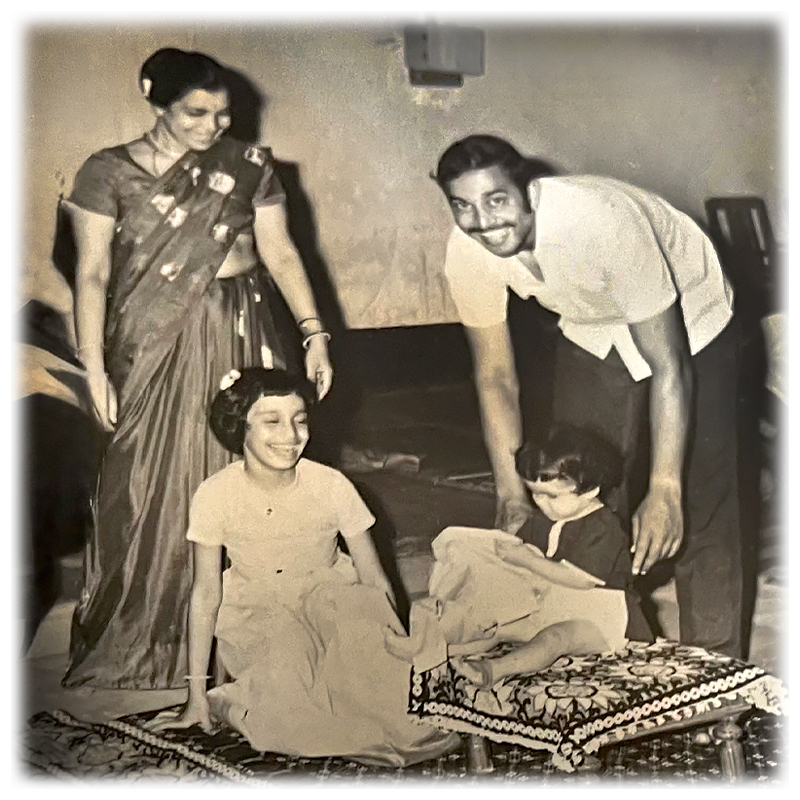
The author, Aparna Huprikar, opening her first saree (age 3)
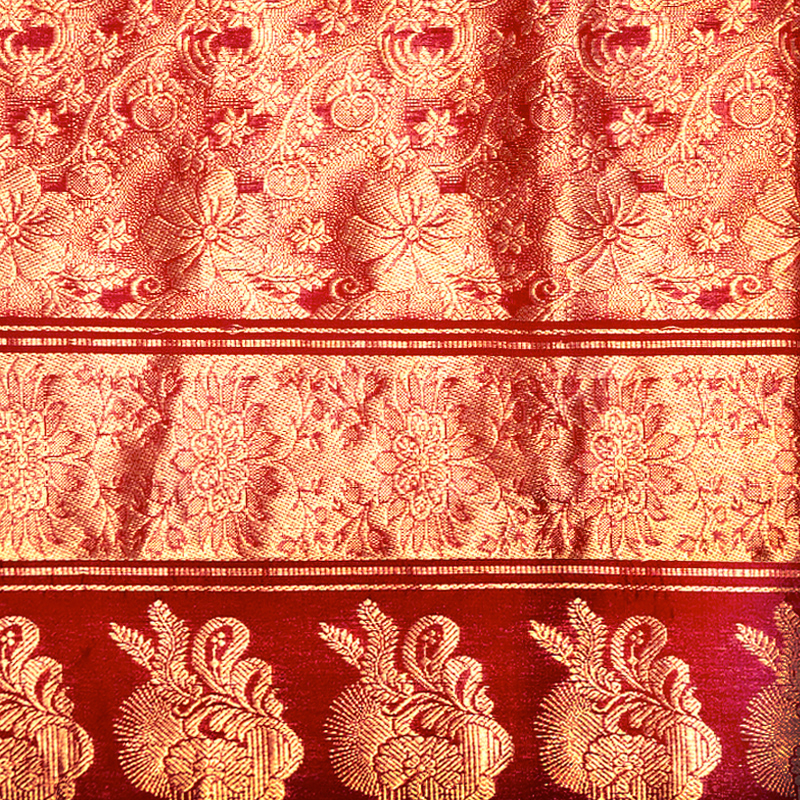 Love
Love
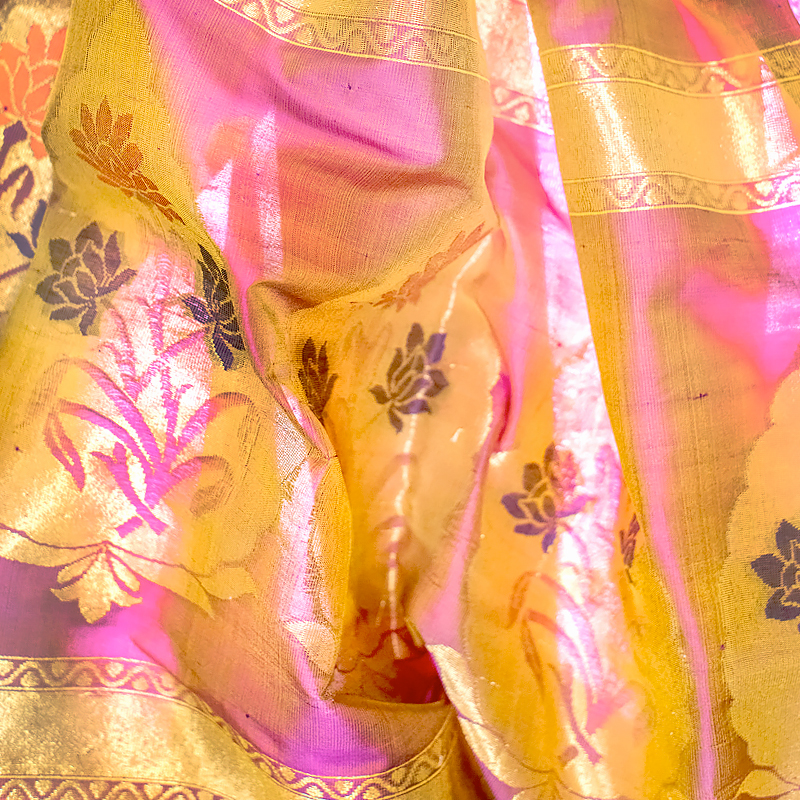 Joy
Joy
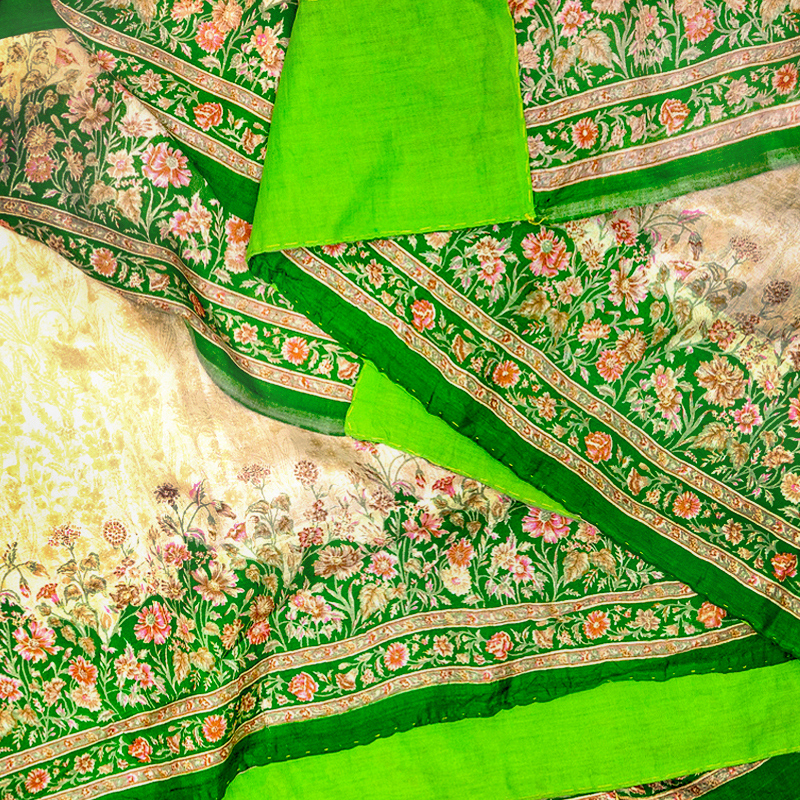 Growth
Growth
Sarees are a distinctive attire that Hindu women have been wearing for centuries. Some of my family's favorite designs are celestial orbs or metallic butta, bold geometric borders, and striking gold paisley. As a bride, I wore red to represent love, shades of yellow and peach during the spiritual and ritualistic parts of my wedding to represent joy, and green to project growth. An Indian bride changes sarees multiple times on her wedding day and during pre-wedding festivities to signify the auspicious union between a bride and groom and their families, with a touch of symbolism and elegance.
Each region of India has a signature saree. The choice of specific colors, patterns, and weaves allows for personalization—motifs of temples, ancient architecture, paisley art, stylized lace, birds in flight, Hindu deities, etc., enable the wearer to project traditions and regional cultures important to them. Someone who cherishes nature can wear a saree adorned with lotuses, jasmines, and vines. Choosing fabrics is done with care as well—silk over brocade for a garden event, or perhaps organza over georgette for an evening at the symphony.
My favorite saree is the Paithani from my home state of Maharashtra, with its beautiful border of peacocks and geometric patterns inlaid with gold on brocade fabric.
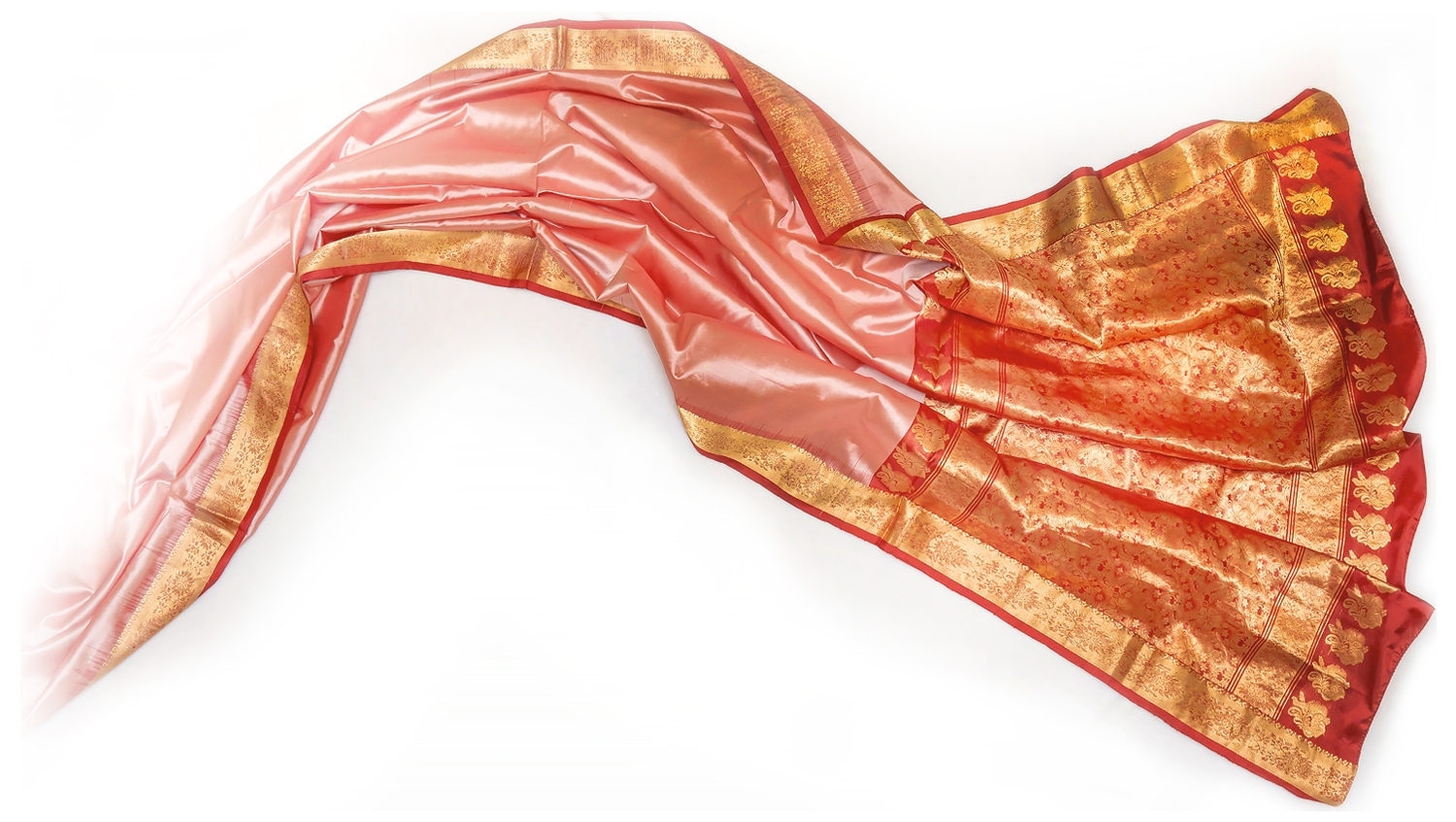
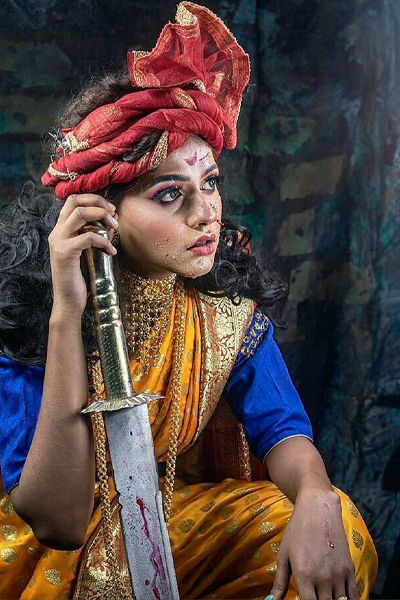 | 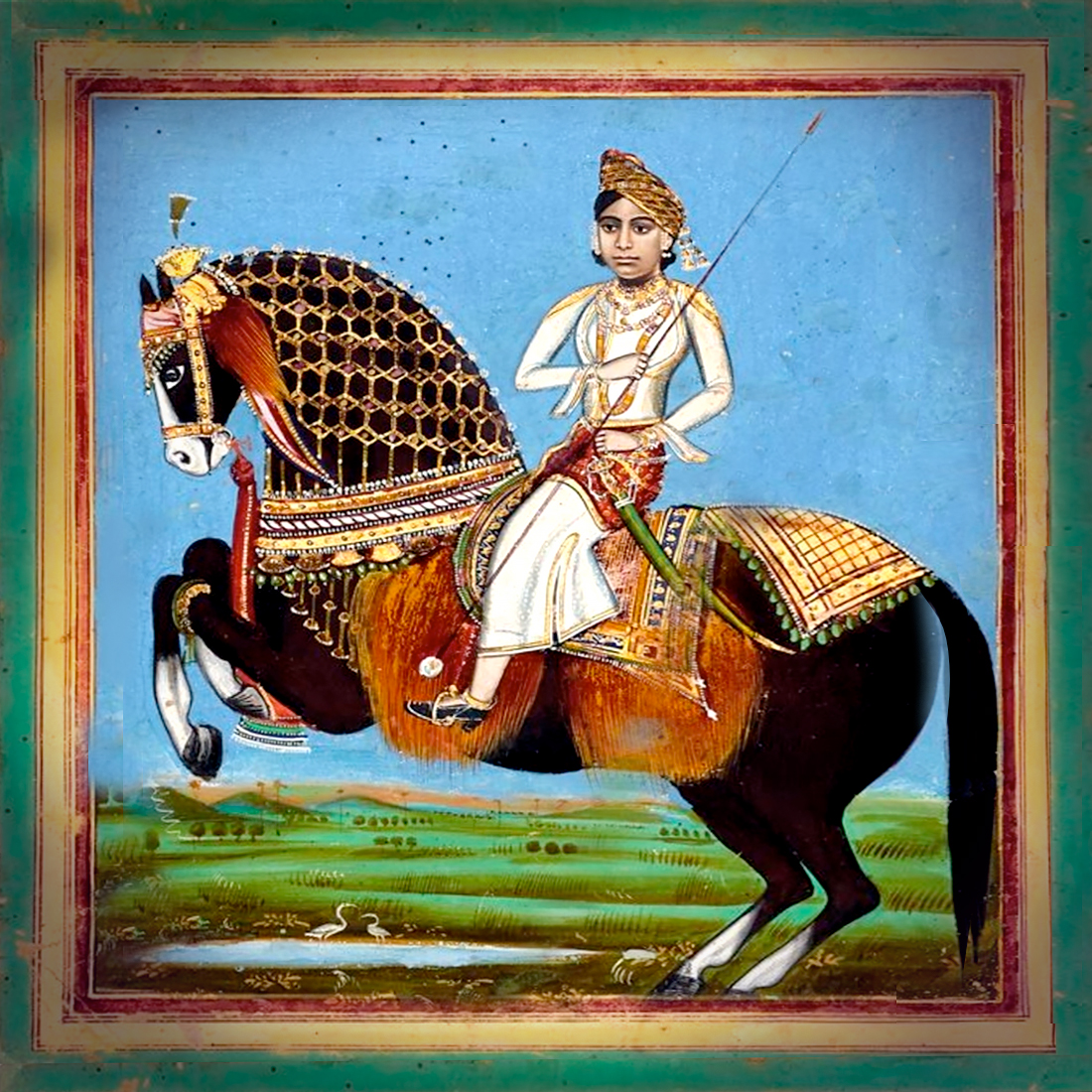 |
| Photo of an actress portraying Rani Lakshmibai, an Indian warrior, courtesy of Tapas Kumar Halder licensed under CC by 4.0 via Wikimedia Commons. 19th Century imaginary portrait of Rani Lakshmibai by a court artist, via Wikimedia Commons. | |
The art of wearing and draping a saree is also an outlet to express spirituality, culture, and beliefs. Traditionally, a petticoat is the first layer of a six-yard saree, which secures the saree fabric in place. The pleats of a saree that gracefully flow from the center, some believe, represent phases of life, the folds depicting the stages of life lived and those yet to come. The way a saree is draped also indicates cultural connections. The finishing touch of a saree is its pallu—the swath of cloth that hangs over the shoulder. The style of the pallu varies across different regions of India, denoting a person’s cultural lineage.
Like a six-yard saree, a nine-yard saree is worn for traditional gatherings in certain parts of India. I first learned of this style while reading about the brave warrior queens and women soldiers of India from centuries ago. They wore these sarees, draped like pants, to allow them to effortlessly ride horses as they prepared for war. I am partial to this style because it symbolizes bravery and courage.
Sarees are often seen as heirlooms, passed down generations, and reserved for special occasions. Unfolding a saree reveals an assortment of glorious and opulent colors, and the sarees themselves weave a chronicle of stories and events. Their distinct embellishments and artistry evoke generational history, akin to a wearer's identity being passed down like a diary. When I wrap myself in my grandmother's saree, I often think of her as I immerse myself in the untold folds of her life, the sparkle of threadwork reflecting the numerous occasions she graced with her beautiful saree.
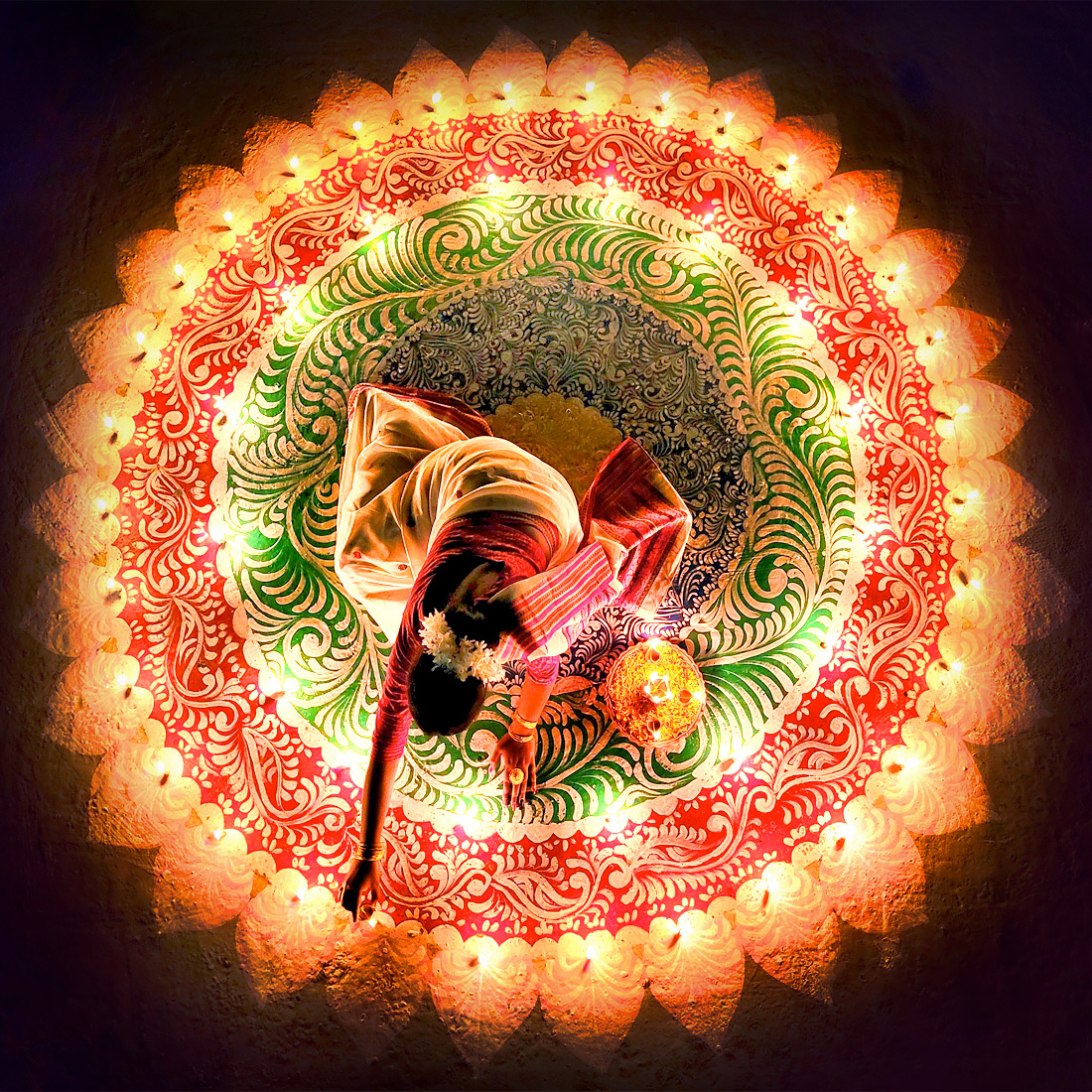 Photo of woman lighting the candles for the Festival of Lights in India, courtesy of AjoyDutta1997 under CC by 4.0 via Wikimedia Commons
Photo of woman lighting the candles for the Festival of Lights in India, courtesy of AjoyDutta1997 under CC by 4.0 via Wikimedia Commons
While many sarees are now designed using automated looms, the traditional ones are still hand-made, and this ancient craftsmanship is embedded in the delicate embroidery and workmanship that continues to connect people to their ancestral cultures. Modern-day sarees have evolved to bring more functionality to the garment for ease of wear and travel. However, traditionalists will always take the time to choose their sarees carefully because they are bespoke pieces that showcase not only their inclination for colors and fabrics but also designs that hold meaning for them.
I have personally incorporated sarees into my life wherever I can, whether I am celebrating the Indian Festival of Lights (Diwali) by adorning my table with saree runners, creating décor with saree fabric on my walls, or wearing a dress made with saree material; it is very much a part of my identity!
My mother-in-law, Jayashree Huprikar, loved nature and gardening, so she always wore sarees with floral motifs. To honor her love of nature, we have shared her cherished sarees with the Chicago Botanic Garden. These vibrant pieces of her life are part of The Orchid Show: India Blooms, celebrating her deep connection to the Garden she adored.
Aparna preparing for The Orchid Show: India Blooms

